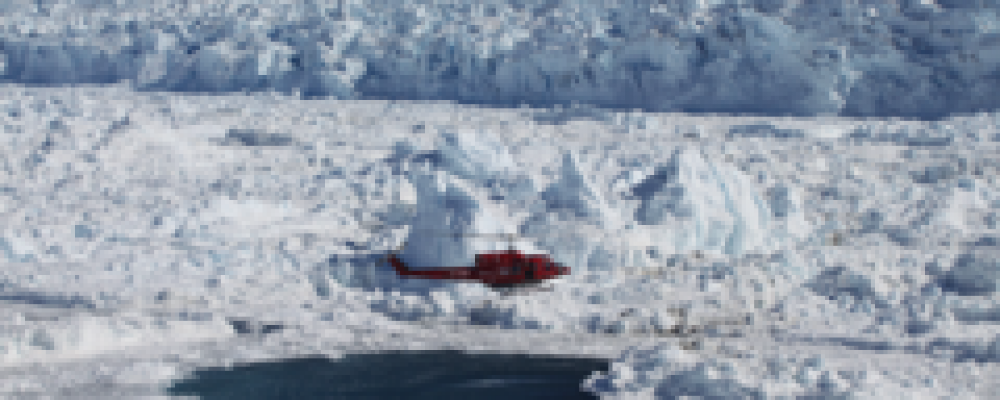Greenland’s land mass of more than 2.1 million km2 is largely covered with glaciers, and their melting fuels as much as one-fifth of global sea-level rise. That’s why a team of USF and NYUAD geoscientists’ new discovery of a mechanism that allows these glaciers to collapse into the sea has special significance for the low-lying coastal areas, such as the ones in the UAE.
In a new research published in Nature Communications, USF geoscientists Tim Dixon and Surui Xie, along with co-authors David Holland, Irena Vaňková, and Denis Voytenko at NYU and NYU Abu Dhabi Research Institute, have uncovered a process that can control the “calving” of glaciers – when large chunks of a glacier collapse into the sea, forming icebergs like the one that sank the Titanic. The team’s discovery will help the scientific community better model future Greenland ice loss and sea-level rise.
Glacier calving is one of the more dramatic aspects of climate change. Depending on the height of the glacier, calving can be akin to an ice structure, the size of a tall skyscraper falling into the sea. Denise Holland, logistical coordinator of the NYU Abu Dhabi team, caught one such calving on video. “Iceberg calving has been challenging to model,” Dixon said. “One of the big unknowns in future sea-level rise is how fast Greenland falls apart, and iceberg calving is one of the least understood mechanisms.”
David Holland, who is the Principal Investigator for NYU Abu Dhabi’s Center for Global Sea Level Change, commented: “Collecting data from such remote and harsh locations is a big logistical challenge but the amazing data sets now emerging make it all worth the effort.”
The team ventured to Greenland in the summer of 2016 to install a new radar system to better understand the process. In particular, they wanted to monitor formations known as pro-glacial “mélange” (from the French word for mixture), a combination of sea ice and icebergs in front of the glacier. The mélange can be tightly packed in the long, narrow fjords that front many of Greenland’s glaciers that meet the sea.
Scientists have long known that mélange can impede glaciers as they move toward the sea, but they haven’t had the data to fully understand the phenomenon.
The team developed a new radar-based approach to precisely measure elevations of the mélange in front of Jakobshavn Glacier, a major outlet glacier on Greenland’s west side. Using analytical techniques developed by Xie, the scientists measured the height of the mélange. The scientists found a thick mélange wedge pressed up against the glacier in late spring/early summer. During this period, no icebergs calved. Once the wedge thinned and melted by mid-summer, calving began in earnest.
Earlier this spring, NASA scientists reported Jakobshavn Glacier, which has been Greenland’s fastest-thinning glacier for the last two decades, was slowing in its movement toward the ocean in what appears to be a cyclical pattern of warming and cooling. But because Jakobshavn is still giving up more ice than it accumulates each year, its sheer size makes it an important factor in sea level rise, NASA scientists maintain.
“We will continue to monitor the mélange over the coming decade,” says David Holland, “as this will help us to better observe and understand the role of the mélange in acting as a sort of door holding back the Greenland ice sheet and its contribution to global sea-level rise.”




